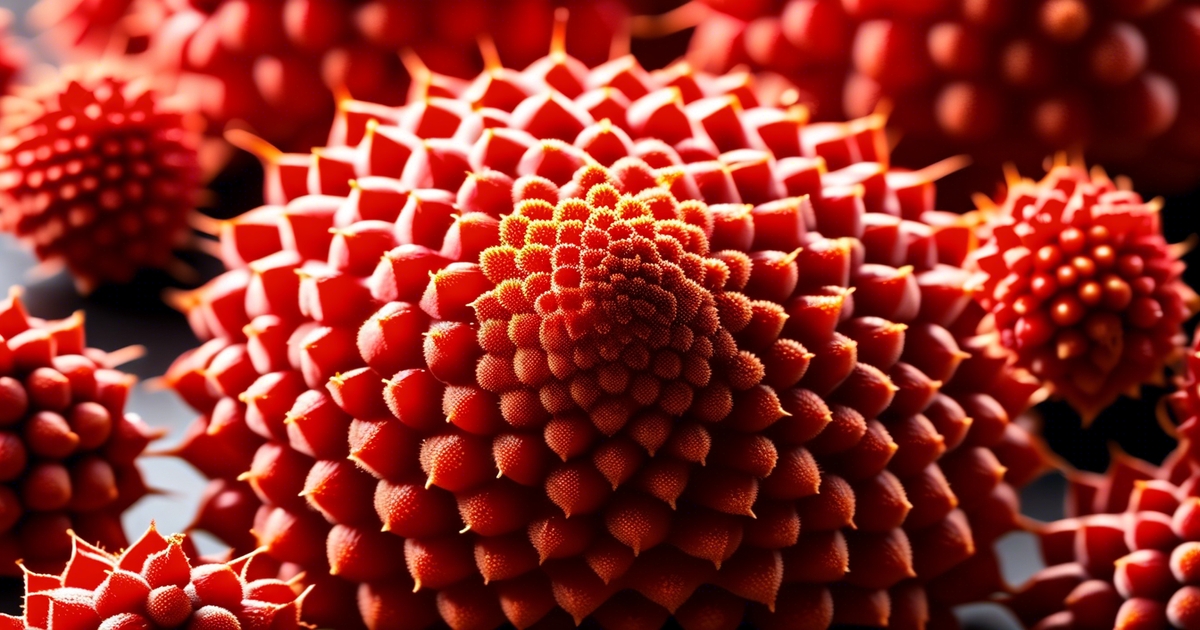Key Takeaways
- Be Informed: Understand the various uses of annatto, a natural food additive with antioxidants and anticancer properties, and its potential side effects to make informed decisions about its consumption.
- Monitor Symptoms: Recognize common side effects like skin reactions or digestive issues, including diarrhea or irritable bowel syndrome, and seek medical advice if you experience any adverse effects.
- Watch for Digestive Problems: Be cautious of digestive issues and allergic reactions from consuming annatto products.
- Follow Dosage Recommendations: Adhere to dosage and consumption guidelines provided by health professionals to minimize the risk of side effects.
- Refer to Research: Stay updated on scientific research regarding annatto side effects to make well-informed choices about its usage.
- Prioritize Safety: Understand the safety profile of annatto and take necessary precautions to minimize the risk of experiencing adverse reactions.
Discover the surprising truth about annatto side effects. Study the potential risks and benefits of consuming this natural food coloring, and view bixin for children. Learn how annatto can impact your health and well-being, from allergic reactions to digestive issues. Arm yourself with the knowledge to make informed choices about including annatto in your diet. Stay informed and empowered to navigate the contrasting aspects of this commonly used ingredient.
Understanding Annatto Uses
Food Applications
Annatto is widely used as a natural coloring agent in the food industry, adding a vibrant orange-red hue to various dishes. It is commonly found in cheeses, butter, rice, sauces, etc.
In Latin American cuisine, annatto plays a crucial role in traditional recipes, such as achiote paste for marinating meats or fish. Its earthy flavor and intense color enhance the visual appeal of dishes.
Cosmetic Uses
Annatto is a natural dye for lipsticks, eyeshadows, and other cosmetic makeup products. Its rich pigment provides an alternative to synthetic dyes while offering skin-friendly benefits.
The historical significance of annatto dates back centuries when indigenous tribes in Central and South America utilized it not only for culinary purposes but also for body painting during rituals and ceremonies.
Cultural Significance
Across various cultures worldwide, annatto holds cultural importance beyond its culinary applications. In Filipino cuisine, it adds color to dishes like kare-kare; in Indian cooking, it enhances biryani’s appearance.
Recognizing Common Side Effects
Symptoms
Consumers may experience symptoms after consuming annatto, a natural food coloring agent. Symptoms such as skin rashes, itching, and gastrointestinal disturbances are commonly reported.
Differentiating Reactions
It is crucial to differentiate between common side effects and severe allergic reactions. While mild symptoms like itching or minor stomach upset are typical, severe allergic responses can manifest as difficulty breathing or facial swelling.
Mild Symptoms Examples
Individuals who have ingested annatto might encounter mild symptoms like skin irritation, nausea, or headaches. These effects usually subside on their own without medical intervention.
Digestive Issues and Allergic Reactions
Digestive Problems
Consuming annatto may lead to digestive problems such as diarrhea, abdominal pain, and irritable bowel syndrome. These issues can arise due to the body’s reaction to the food dye in various dishes.
Annatto can sometimes trigger digestive disorders, causing discomfort for individuals with sensitive stomachs. The presence of this additive in foods can exacerbate existing gastrointestinal problems.
Signs of Allergic Reactions
Allergic reactions to annatto may manifest as skin rashes, itchiness, or even respiratory difficulties. In severe cases, individuals might experience anaphylaxis, a life-threatening allergic response that requires immediate medical attention.
People with allergies should be cautious when consuming foods containing annatto, as it can trigger adverse reactions that affect their health. It is essential to recognize these signs promptly and seek medical help if necessary.
Management Tips
To manage digestive discomfort related to annatto intake, individuals can temporarily eliminate foods containing this ingredient from their diet. Keeping a food diary can help identify triggers and alleviate symptoms effectively.
Consulting an allergist for testing and guidance is crucial for those prone to allergic responses. They can provide personalized advice on managing allergies and avoiding potential triggers like annatto in foods.
Dosage and Consumption Guidelines

Safe Intake Levels
Age plays a crucial role in determining the appropriate dosage of annatto products. For children, it is recommended to consult a healthcare provider before incorporating annatto into their diet due to potential allergic reactions.
Factors Influencing Dosage
The view on annatto’s benefits versus risks also influences consumption levels. Individuals with a history of digestive issues or allergies should consume annatto cautiously, while others may safely enjoy its benefits.
Incorporating Annatto Into Daily Diet
When adding annatto to your daily diet, start with small amounts and monitor for any adverse effects. Gradually increase the intake if no negative reactions occur, ensuring not to exceed the recommended daily intake.
Scientific Research on Side Effects
Safety Profile
Recent studies have delved into the potential side effects of annatto, particularly its use as a food colorant. Human studies have shown mixed results, with some indicating no adverse effects while others suggest possible allergic reactions in sensitive individuals. On the other hand, animal studies have raised concerns about liver damage and growth inhibition in certain cancer cells.
Conflicting Evidence
In a study published in Food and Chemical Toxicology, researchers found that annatto extract exhibited anticancer properties by suppressing tumor growth in tube studies. However, the application of these findings to human health remains uncertain due to the lack of extensive human trials. This highlights a significant gap in our understanding of how annatto may affect human health compared to artificial colors.
Limitations and Considerations
While some research points towards potential benefits like anticancer properties, there is still insufficient evidence to draw definitive conclusions on the safety profile of annatto. The varying outcomes between human and animal studies underscore the need for further comprehensive research to elucidate any risks associated with its consumption.
Safety Profile of Annatto
Comparison with Other Colorants
Annatto has a generally safe reputation as a food additive, with limited reported side effects. When compared to synthetic colorants, annatto stands out for its natural origins and antioxidant properties.
Regulatory Approvals
The FDA et al. and other regulatory bodies have approved using annatto as a food coloring agent in various products. Its safety assessments have supported its inclusion in consumer goods like cheese, butter, and margarine.
Industry Standards
Annatto boasts a strong safety record compared to other natural colorants like turmeric or beetroot extract. It is widely used in the industry due to its vibrant hue and minimal adverse effects.
Minimizing the Risk of Side Effects
Reading Labels
Start by reading product labels diligently. Look out for terms like “natural colorings” or “color added,” as they may indicate the presence of annatto.
Moderation and Awareness
To reduce the likelihood of side effects, consume foods containing annatto in moderation. Excessive intake can lead to adverse reactions, especially in sensitive individuals. Be mindful of your consumption levels.
Hidden Sources
Hidden sources of annatto can be found in various products, such as dairy, snacks, and processed foods. To avoid unexpected exposure, always carefully check ingredient lists before purchasing.
Health Benefits Balance
While annatto offers various health benefits like antioxidants and antimicrobial properties, maintaining a balance is crucial. Overconsumption might outweigh its advantages and result in unwanted effects on health.
Comprehensive Safety Evaluation Health Risks

Consuming annatto may lead to allergic reactions, including skin rashes, itching, and swelling. Some individuals might experience gastrointestinal issues like stomach pain or nausea after ingesting products containing annatto.
Precautions
It is crucial for individuals with known allergies to food dyes or specific health conditions to exercise caution when consuming annatto. Those with a history of allergies should carefully read product labels and consult healthcare professionals before using such products.
Seeking Medical Advice
If you encounter persistent or severe side effects from consuming annatto, it is advisable to seek prompt medical attention. Symptoms like difficulty breathing or rapid heartbeat should not be ignored and warrant immediate consultation with a healthcare provider.
Summary
In understanding annatto uses, recognizing common side effects, and delving into digestive issues and allergic reactions, you’ve gained valuable insights into the potential impacts of this natural colorant. By exploring dosage guidelines, scientific research findings, safety profiles, and strategies to minimize annatto consumption risks, you can make informed decisions about its usage. Completing a comprehensive safety evaluation ensures you prioritize your well-being when incorporating annatto into your diet or daily routine. Stay vigilant about potential side effects, monitor your body’s responses, and consult healthcare professionals if needed.
Take charge of your health by staying informed and proactively managing any potential side effects related to annatto consumption. Your well-being is paramount, so empower yourself with knowledge and make choices that align with your health goals.
Frequently Asked Questions
What are the common side effects of consuming annatto?
Annatto consumption may lead to common side effects such as skin allergies, digestive issues like stomach pain or nausea, and, in rare cases, respiratory problems. Monitoring your body’s response when using products containing annatto is essential.
How can one minimize the risk of experiencing side effects from annatto?
To minimize the risk of side effects from annatto, start with small doses to test your body’s reaction. Monitor for any adverse symptoms like skin rashes or digestive discomfort. Consult a healthcare provider before regular consumption if you have existing allergies or medical conditions.
Is there scientific research available on the potential side effects of annatto?
Scientific research on annatto’s side effects is ongoing but limited. Some studies suggest possible links between annatto consumption and allergic reactions or digestive issues. Stay updated on reputable sources for the latest findings regarding annatto safety and potential risks.
Are there specific dosage guidelines recommended for consuming products containing annatto?
While specific dosage guidelines may vary based on individual tolerance levels, it is generally advised to follow product instructions carefully. Start with a small amount and gradually increase intake if no adverse reactions occur. Consulting a healthcare professional for personalized advice is recommended.
How can I ensure comprehensive safety when using products that contain annatto?
Conduct thorough research on reputable brands known for quality sourcing and manufacturing practices for comprehensive safety when using products containing annatto. Check product labels for certifications and consult reviews from trusted sources to ensure reliability and minimize potential risks associated with low-quality products.

